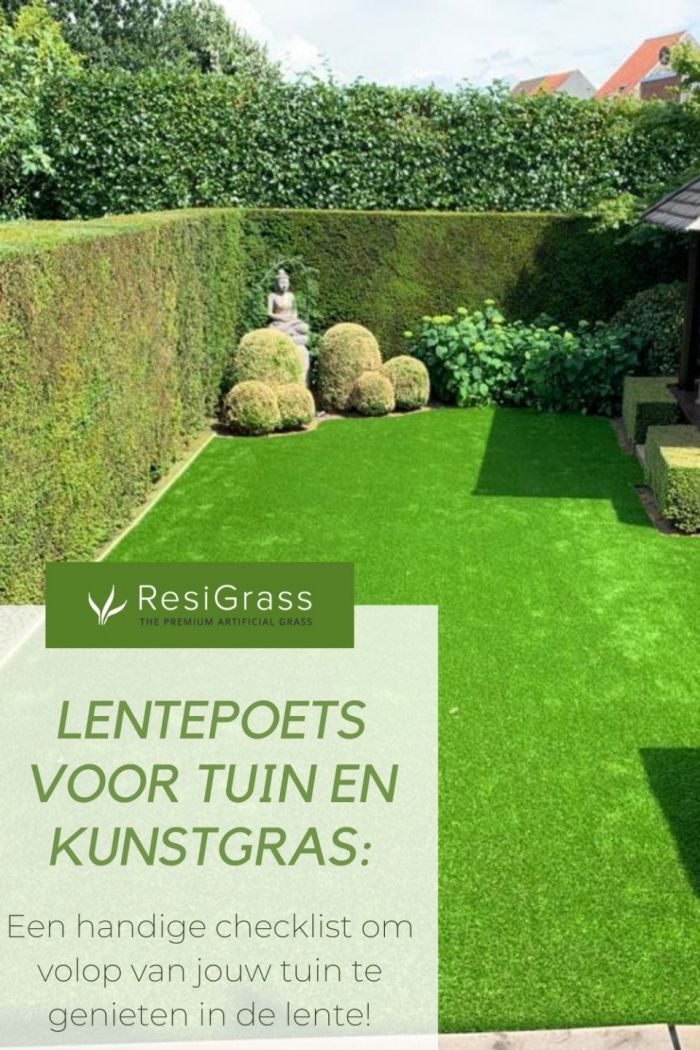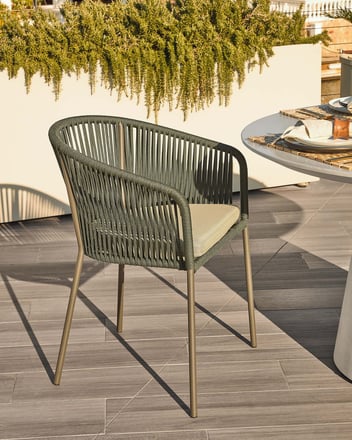Spring cleaning your artificial grass and garden: a handy checklist!

Do you have to clean your artificial grass in spring? And can I do that with a pressure washer or should I use special products? Answers to these and more questions can be found below!
From removing moss in a natural way, to planting, to refreshing your artificial grass: read all about the spring cleaning for your garden and terrace below!
Get rid of green deposits
Algae, moss and green deposits have been allowed to flourish throughout the winter - until now! Various natural miracle remedies get rid of them in an environmentally friendly way, such as this tip from Auntie Kaat for removing green deposits: apply a mixture of water and vinegar to the green stains. The next day, rinse everything clean with water. Water and oxygen water (50/50) can also be used. Feeling sporty? Then you can sprinkle your path with sand and scrub with a hard brush as a kind of (hard) scrub.
Moss or green deposits may also have developed in your fake grass. This can be easily removed with a high-pressure cleaner and/or Resiclean. You spread this product, diluted with water, over the turf and the enzymes 'eat' away the unwanted residue, as it were. The rain then does the rest!
Snip snip!
Some plants and shrubs are ready to be pruned from March onwards (only if it is no longer freezing!). Now that you're in the flowerbeds anyway, it's best to weed all at once and remove the dead or dying plants. Give your shrubs some extra oxygen by gently loosening the soil around them. If necessary, add some extra fertiliser.
The trimmings that ended up on your plastic lawn? It is best to remove it carefully: a leaf blower, industrial hoover or high-pressure cleaner work wonders here. Organic material that remains in the ground forms a fertile layer of sludge in which weeds can grow.
Planting flowers
From March, annual summer flowers can normally be planted in the ground. Bulbs that are sensitive to frost are best kept indoors in a pot, as it can still freeze. The final planting out should be done after the summer solstice, from 16 May onwards.
SOS fauna
Spring is the time when many birds and insects spring back into action. You can help birds build nests by placing twigs, winter fur and dry leaf litter in a safe place. Bees also deserve extra attention: place bee hotels (you can buy them or make your own) and perhaps plant a wildflower meadow? Important: always choose indigenous flower species (Benelux, Northern France and Western Germany). By doing so, you will contribute to the preservation of a number of very important insect species.
Prepare your garden thoroughly for spring by:
- Pruning existing plants and hedges,
- Planting new plants in the ground after the winter solstice (16 May)
- Fertilising your lawn or giving your artificial lawn a good deep-cleaning.
- As icing on the cake, make it a nice place for both you and the fauna and flora with small initiatives such as a bee hotel!
You can easily provide for an annual (in-depth) cleaning of your artificial lawn yourself. Would you prefer some help?
Call us for more information or schedule a maintenance session by phone!


.jpg?width=352&name=PotteryPotsSfeer-64_7333-600x600%20(2).jpg)